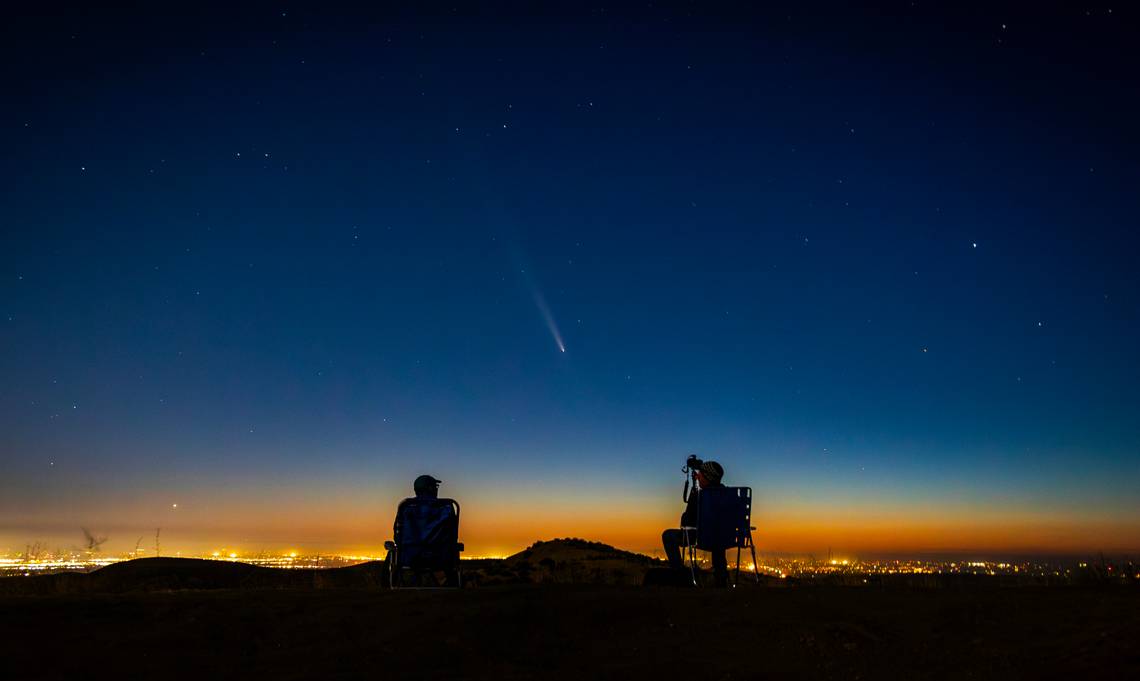
In what has become a three-week streak of celestial phenomenon across the Idaho skies, residents can look up Tuesday night to see an ancient comet zooming past Earth during its estimated 80,000-year orbit through the solar system.
Comet C/2023 A3 (Tsuchinshan-ATLAS) should be visible to the naked eye after sunset, as the comet will be one of the brightest objects in the night sky.
Here is how to catch this comet as it zips past our planet.
What is the Tsuchinshan-ATLAS comet?
While the comet was just discovered in 2023, it is very old. According to NASA, the comet is from the Oort Cloud, believed to be a massive spherical shell surrounding the solar system containing icy pieces of space debris as large as mountains.
The comet is approaching the inner solar system on its orbit for the first time in documented history. If the comet’s tail is visible, it could be visible to the unaided eye. It’s expected to have a brightness magnitude of between 2 and 4, which is not bad, according to Beth Ridgeway the MSFC of the Meteoroid Environment Office at NASA.
She writes in her NASA blog post, “Stellar magnitude is measured on a logarithmic scale, which makes a magnitude 1 star exactly 100 times brighter than a magnitude 6 star.”
NASA has recommended that Oct. 14 through Oct. 24 is the best time to observe the comet, using binoculars or a small telescope.
Viewers should look west and low on the horizon, although the comet will be a little higher in the sky each day we get closer to Oct. 24.
Can the comet be viewed from Boise?
Tuesday night could be the last chance for Boise residents to view the Tsuchinshan-ATLAS comet well, a result of weather changes.
The National Weather Service in Boise forecasts a low-pressure system to bring moderate rain and partly cloudy skies into the Treasure Valley until Friday. That could easily impede the views.
NASA astronomer Bill Cooke, who leads the Meteoroid Environment Office at NASA’s Marshall Space Flight Center in Huntsville, Alabama, told Ridgeway that he expects viewing the comet can be done anytime after daylight hours. Sunsets in Boise hit at around 7:30 p.m. these days, and right after that is generally a good time to try to find it.
Locating an area with low light pollution would be the best way to spot the comet, experts say.
The website Light Pollution Map shows where exactly you can escape light pollution, but here are some options in the area:
EMEA Tribune is not involved in this news article, it is taken from our partners and or from the News Agencies. Copyright and Credit go to the News Agencies, email news@emeatribune.com Follow our WhatsApp verified Channel




